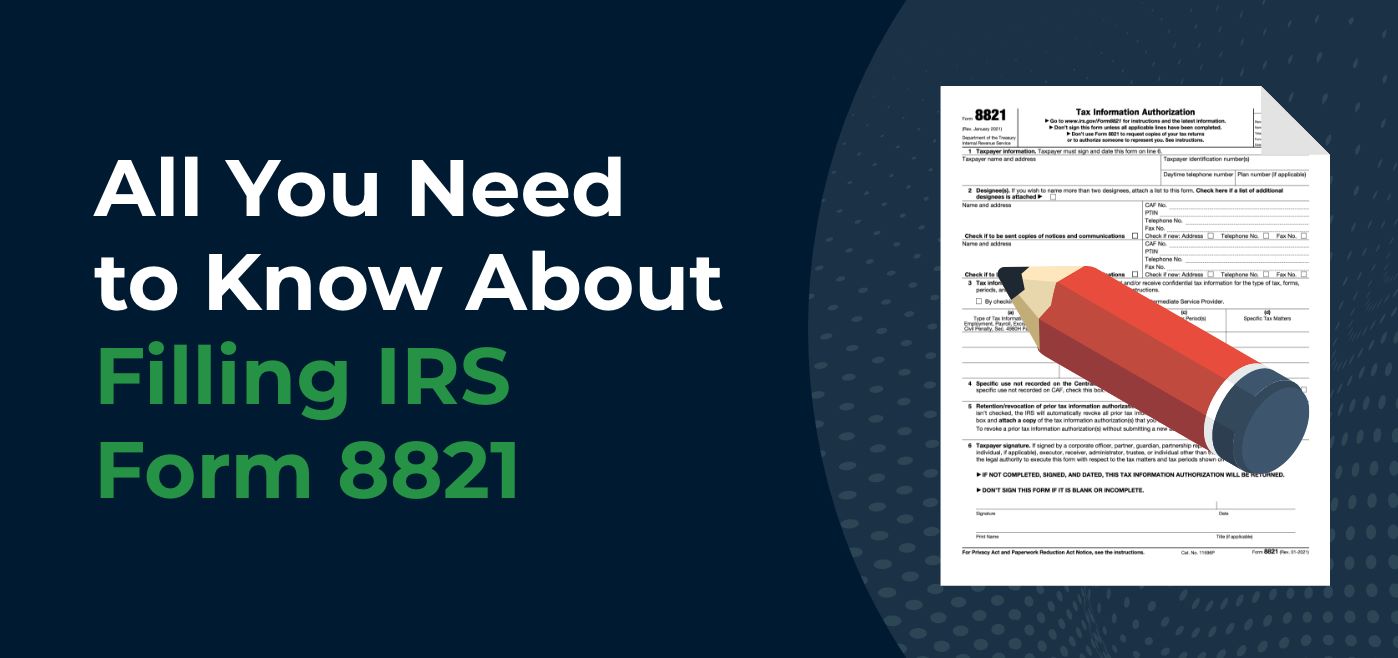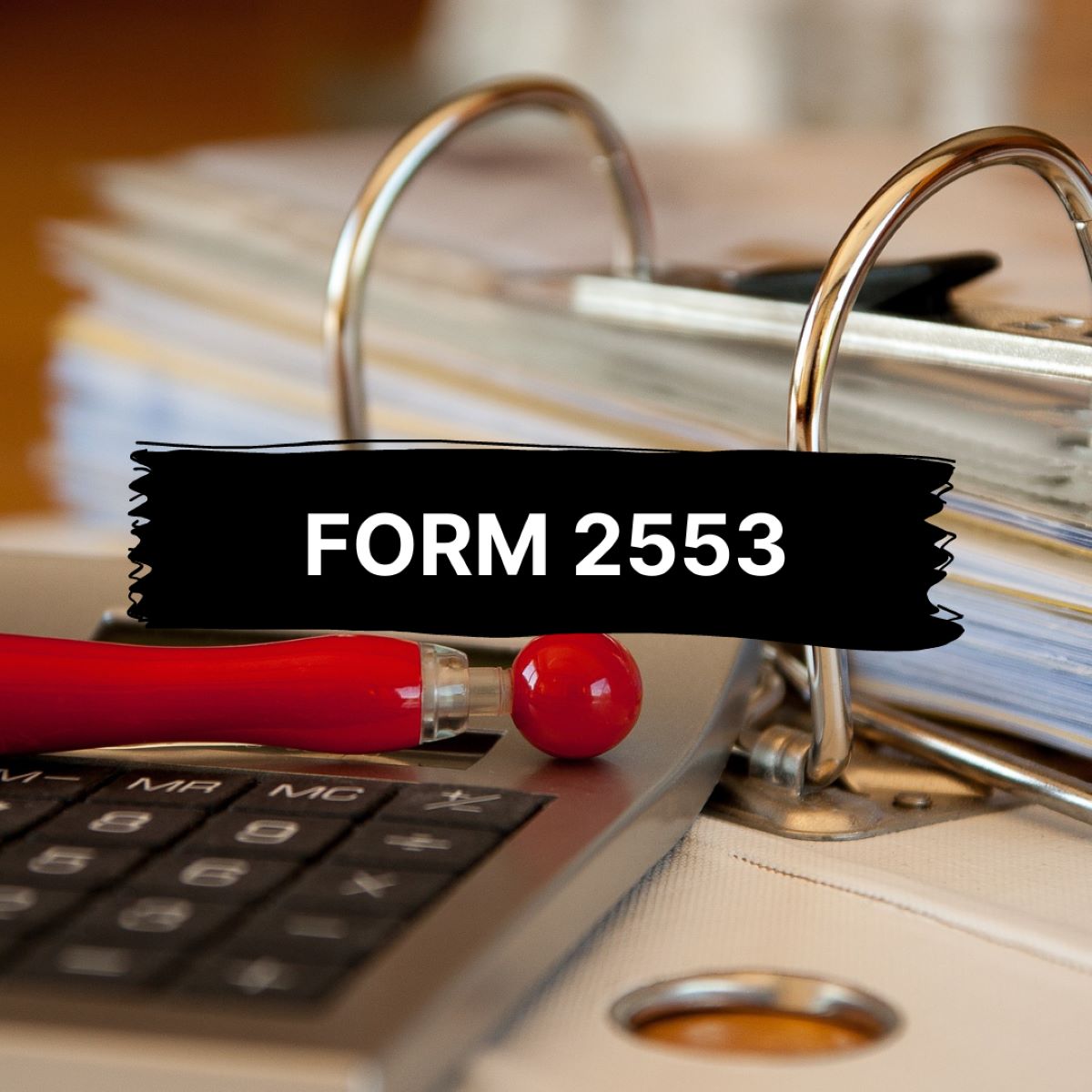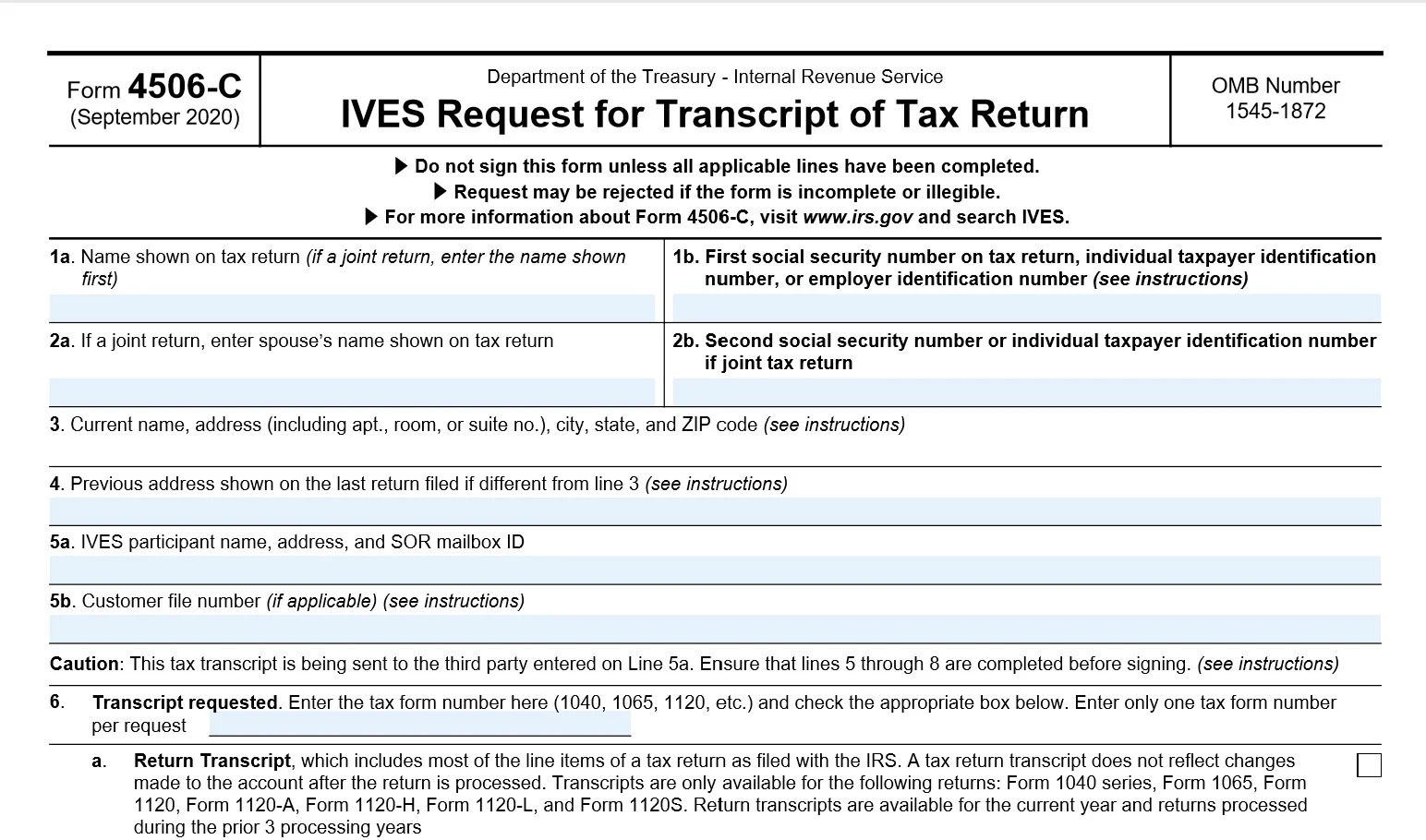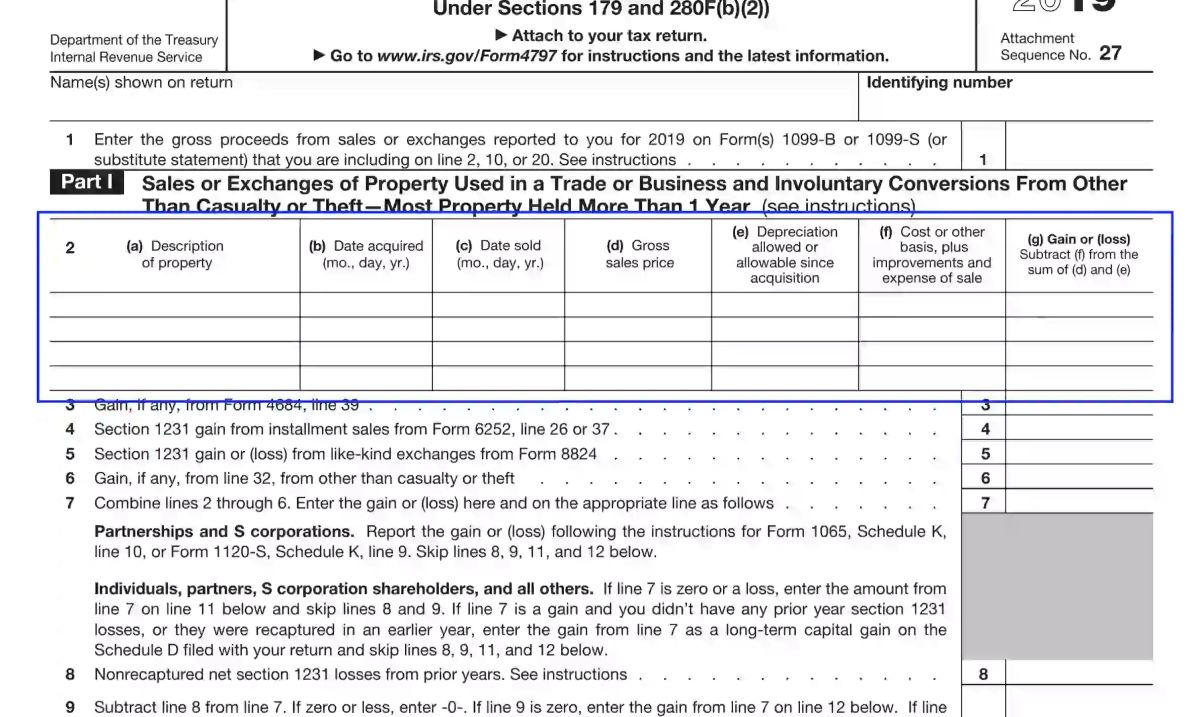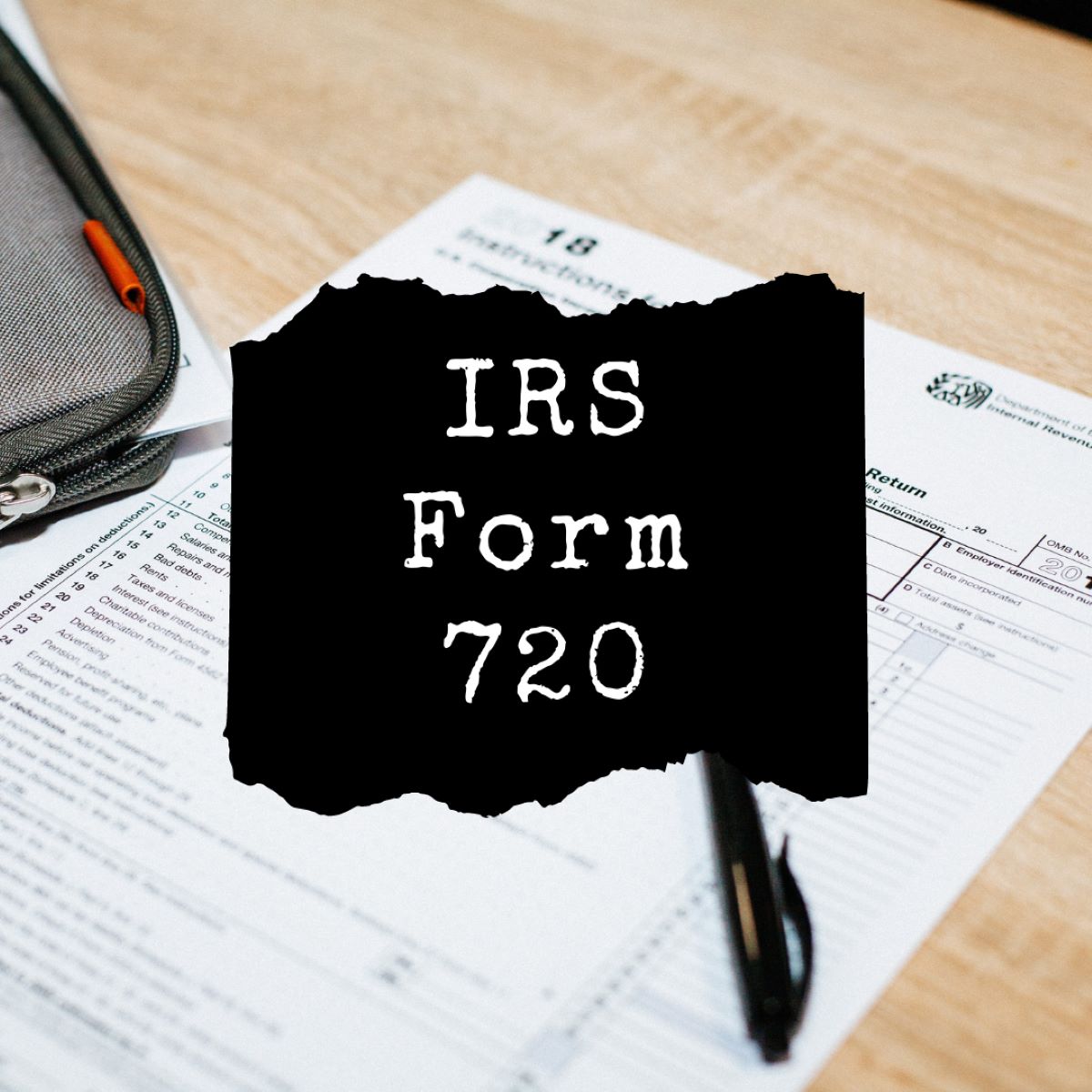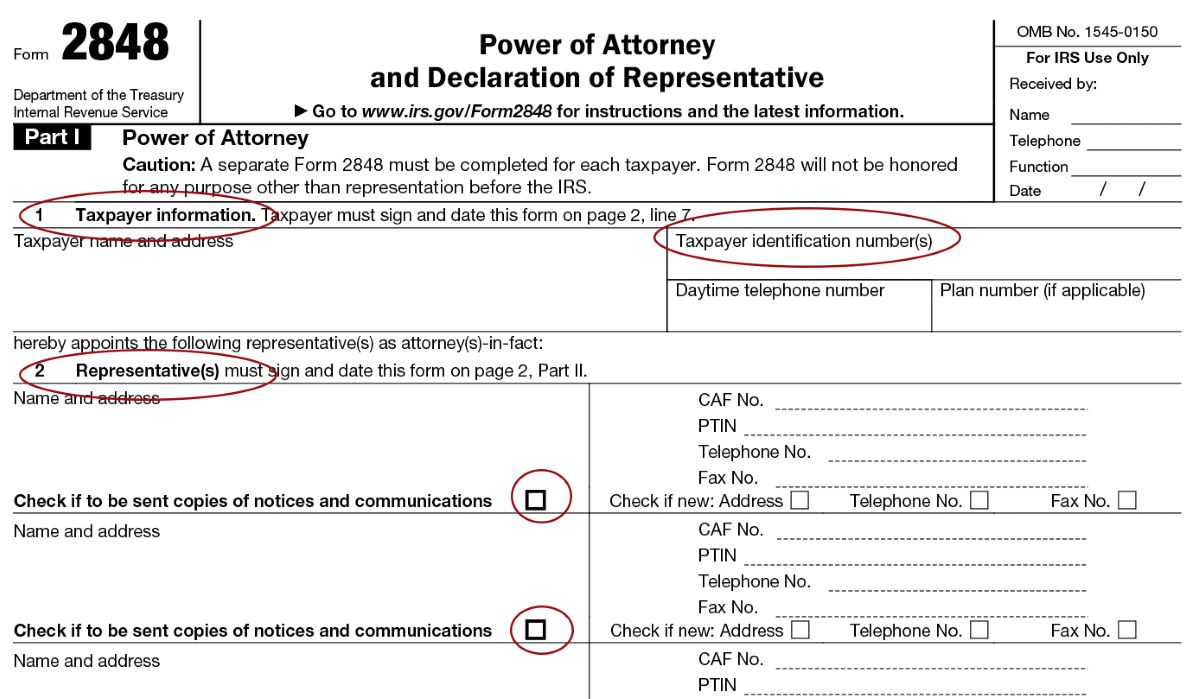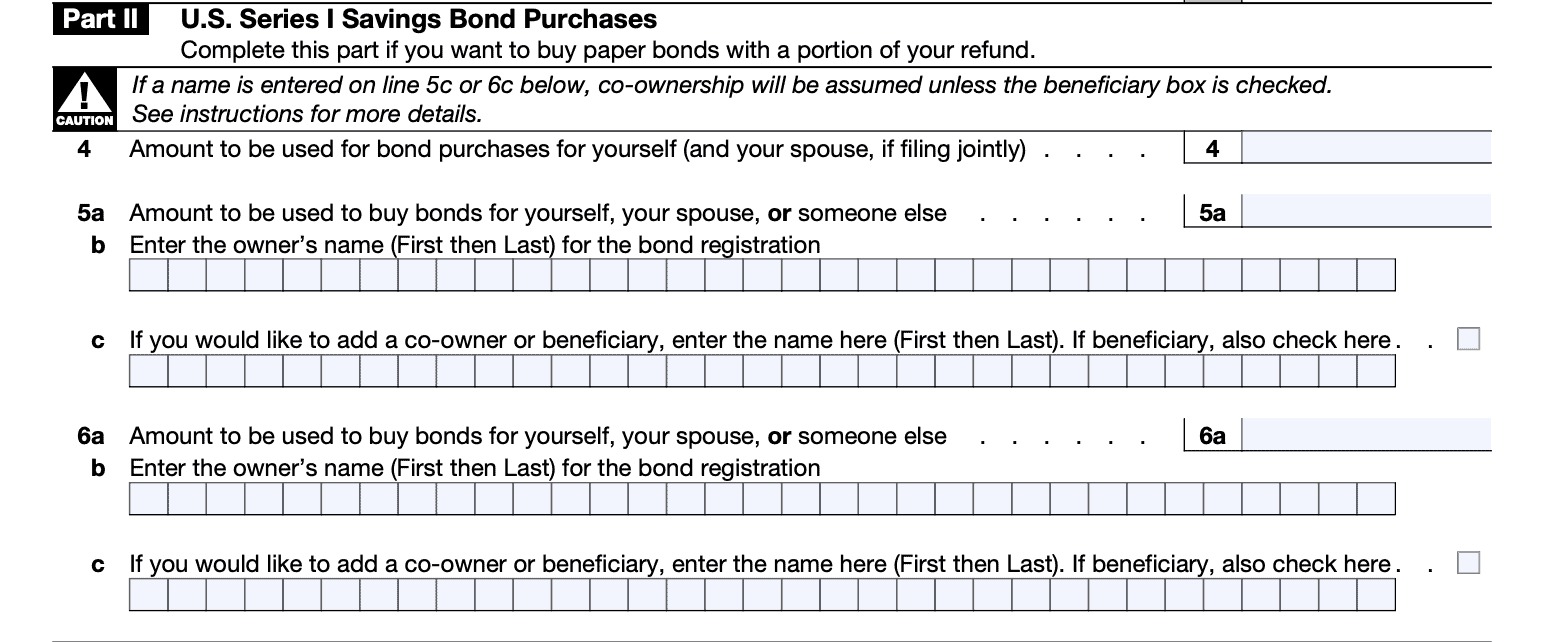

Finance
What Is Form 8888 IRS?
Published: November 1, 2023
Learn about Form 8888 IRS and how it can help you manage your finances more efficiently. Discover the benefits and steps to follow for a successful submission.
(Many of the links in this article redirect to a specific reviewed product. Your purchase of these products through affiliate links helps to generate commission for LiveWell, at no extra cost. Learn more)
Table of Contents
Overview
Form 8888 IRS, also known as “Allocation of Refund,” is an important document that allows individuals to wisely manage their tax refunds. When you file your tax return and you are expecting a refund from the Internal Revenue Service (IRS), Form 8888 provides you with the option to allocate your refund amount to different financial accounts or use it to purchase savings bonds.
This form is particularly helpful for individuals who have multiple financial goals or want to maximize the benefits of their tax refund. By using Form 8888, you can choose how your refund is distributed, whether it be for debt payments, savings, investments, or other financial purposes.
It’s worth noting that Form 8888 is not mandatory. If you don’t want to allocate your refund or have a specific purpose for it, you can simply choose to receive the refund as a check or direct deposit into your bank account without using Form 8888.
Form 8888 allows you to divide your refund into up to three different accounts, which can include checking accounts, savings accounts, Individual Retirement Accounts (IRAs), and Health Savings Accounts (HSAs). Additionally, you can also direct a portion of your refund to the purchase of savings bonds. The form provides clear instructions on how to fill out the allocation details and where to direct your refund.
It’s important to note that using Form 8888 does not guarantee that your refund will be distributed exactly as specified. The IRS will still conduct a thorough review of your tax return and any applicable deductions or credits before approving and disbursing your refund. However, using Form 8888 ensures that your intended allocations are communicated to the IRS for processing.
Now that we have an overview of Form 8888, let’s delve into its purpose and how to effectively fill it out to maximize the benefits of your tax refund.
What is Form 8888 IRS?
Form 8888 IRS, officially titled “Allocation of Refund,” is a tax form that individuals can use to direct the allocation of their tax refund. It provides a convenient way to split your refund amount into different financial accounts or use it to purchase savings bonds. This form is used during the process of filing your federal income tax return with the Internal Revenue Service (IRS).
The purpose of Form 8888 is to give taxpayers greater control over how their tax refunds are distributed. Instead of receiving the entire refund amount as a single payment, you can use this form to designate specific amounts to different accounts, such as checking accounts, savings accounts, IRAs, HSAs, or even to purchase savings bonds.
Form 8888 is especially beneficial for individuals who have specific financial goals or want to strategically manage their refund. By allocating your refund to different accounts, you can effectively use it to pay off debts, build up your emergency savings, invest in retirement, or fund other financial endeavors.
This form also provides an opportunity to purchase savings bonds with your refund. Savings bonds are low-risk investment options issued by the U.S. Department of the Treasury. They can be a secure way to save for the future or to gift to loved ones.
Form 8888 allows you to divide your refund into up to three different accounts or financial instruments. It’s important to note that the form requires you to provide the necessary account information for each allocation, such as the account number and routing number for direct deposits, or the necessary details for purchasing savings bonds.
It’s essential to understand that using Form 8888 is optional. If you prefer to receive the full refund amount in a single payment or via direct deposit into a specific account, you are not required to use this form. However, if you want to take advantage of the flexibility and strategic allocation options, completing Form 8888 can be highly beneficial.
Now that we know what Form 8888 is and its purpose, let’s dive into the process of filling it out correctly to ensure that your refund is allocated according to your preferences.
Purpose of Form 8888 IRS
The purpose of Form 8888 IRS, also known as “Allocation of Refund,” is to provide taxpayers with the ability to control the allocation of their tax refunds. This form allows individuals to designate how their refund amount should be distributed among different financial accounts or used to purchase savings bonds.
One of the key purposes of Form 8888 is to help individuals achieve their financial goals in a strategic manner. By using this form, taxpayers can ensure that their tax refund is utilized effectively to support various financial objectives. Whether it’s paying down debts, building an emergency fund, saving for retirement, or investing in other financial ventures, Form 8888 allows for a customized approach to managing your refund.
Another purpose of Form 8888 is to simplify the process of allocating your refund. Rather than receiving a lump sum refund and manually transferring funds to different accounts or making separate purchases, Form 8888 streamlines the distribution process. By providing the necessary allocation details on this form, you can directly designate the refund amounts to specific accounts or savings bonds.
Form 8888 also promotes financial responsibility and encourages individuals to make wise financial decisions. By having the option to allocate funds towards debt repayment, savings, or investment, taxpayers can take a proactive approach towards improving their financial well-being. This form empowers individuals to prioritize their financial goals and make informed decisions with their tax refund.
Furthermore, Form 8888 provides an opportunity for individuals to invest in savings bonds. This can serve as a long-term savings strategy, allowing individuals to accumulate funds over time. Savings bonds are low-risk investments backed by the U.S. government, making them a secure option for individuals who want to grow their savings in a reliable and relatively stable manner.
In summary, the purpose of Form 8888 IRS is to give taxpayers control over the allocation of their tax refunds, facilitate the strategic management of funds, simplify the distribution process, foster financial responsibility, and provide an opportunity to invest in savings bonds. By using this form, individuals can ensure that their tax refund aligns with their financial goals and contributes to their long-term financial well-being.
How to Fill Out Form 8888 IRS
Filling out Form 8888 IRS, also known as “Allocation of Refund,” requires careful attention to detail. Follow these steps to ensure you complete the form accurately:
- Identify the tax year: At the top of the form, indicate the tax year for which you are filing.
- Provide your personal information: Enter your name, Social Security number, and address as requested.
- Choose the type of refund: Indicate whether you are requesting a direct deposit or a paper check for your refund. If you opt for a direct deposit, include your bank account information, including the routing number and account number. If you prefer a paper check, ensure you provide your correct mailing address.
- Decide on allocation options: Determine how you want your refund to be allocated. You can split the refund amount into up to three different accounts or purchase savings bonds. If allocating to accounts, provide the necessary account information for each allocation, including the financial institution name, account number, and routing number. If purchasing savings bonds, specify the amount you want to allocate toward this option.
- Consider tax obligation: If you have an outstanding tax obligation, such as unpaid taxes or other debts owed to the IRS or another federal agency, you may choose to allocate a portion of your refund to cover those amounts. This can be done by completing Part II of Form 8888.
- Review and sign the form: Double-check that all information provided is accurate and complete. Ensure you have signed and dated the form in the appropriate sections.
It’s important to note that if you are completing Form 8888 as part of your tax return, you should attach it to your Form 1040, Form 1040A, or Form 1040EZ. If you are filing electronically, follow the instructions provided by your tax software or online tax filing platform.
Remember to keep a copy of the completed Form 8888 for your records. It’s also a good idea to verify any account or bank information to ensure accuracy and prevent any delays or issues with your refund.
By carefully following these steps and providing accurate information, you can effectively fill out Form 8888 IRS and ensure that your tax refund is allocated according to your preferences.
Eligibility Requirements
While Form 8888 IRS provides taxpayers with the flexibility to allocate their tax refunds, there are certain eligibility requirements that must be met in order to use this form. Here are the key eligibility criteria to keep in mind:
- Must be entitled to a tax refund: To utilize Form 8888, you must be eligible for a tax refund. This means that you have overpaid your taxes throughout the year, resulting in a refund owed to you by the IRS.
- Must have a valid Social Security number: You must have a valid Social Security number to file a tax return and use Form 8888. This requirement applies to both primary filers and any dependents listed on the return.
- Must provide accurate account information: If you choose to allocate your refund to specific financial accounts, you must provide accurate and valid account information, such as the name of the financial institution, account number, and routing number. This ensures that the IRS can correctly process the allocation.
- Must meet savings bond purchase requirements: If you wish to use your refund to purchase savings bonds, you must meet the eligibility requirements set by the U.S. Department of the Treasury. This may include being a U.S. citizen or resident, having a valid Social Security number, and complying with any purchase limits or guidelines in place.
- Must comply with other IRS filing requirements: In addition to the eligibility criteria specific to Form 8888, you must also meet the general filing requirements of the IRS. This includes filing your tax return by the due date, accurately reporting your income, deductions, and credits, and complying with any other relevant tax laws and regulations.
It’s important to note that eligibility for Form 8888 does not guarantee the approval or disbursement of your refund. The IRS will still review your tax return for accuracy and compliance with tax laws before processing your refund. Any discrepancies or errors in your return may result in delays or adjustments to the refund amount.
If you are unsure about your eligibility to use Form 8888 or have questions about specific requirements, it is recommended to consult with a tax professional or refer to the official guidance provided by the IRS on their website or publications.
By meeting the eligibility requirements and accurately completing Form 8888, you can take advantage of the allocation options available and manage your tax refund in a way that aligns with your financial goals and priorities.
Benefits and Advantages of Form 8888 IRS
Form 8888 IRS, also known as “Allocation of Refund,” offers several benefits and advantages to taxpayers who choose to use it. By utilizing this form, individuals can take control of their tax refund and optimize its impact on their financial well-being. Here are some key benefits of using Form 8888:
- Customized allocation: One of the primary advantages of Form 8888 is the ability to allocate your tax refund according to your specific financial goals and priorities. Instead of receiving a lump sum refund, you can divide it into different accounts or use it to purchase savings bonds, allowing you to direct your funds towards debt repayment, savings, investments, or other financial endeavors.
- Strategic financial management: Form 8888 empowers individuals to make strategic financial decisions with their tax refund. By carefully considering how to allocate the refund, you can optimize its impact on your financial situation. For example, you can use the refund to pay off high-interest debts, boost your emergency savings, or invest in tax-advantaged retirement accounts, contributing to long-term financial stability and growth.
- Simplified distribution process: Form 8888 simplifies the distribution of your tax refund. Instead of manually transferring funds to different accounts or making separate purchases, you can provide the necessary allocation details on the form itself. This streamlines the process, saving you time and effort.
- Flexibility and control: Using Form 8888 gives you greater flexibility and control over your tax refund. You can choose how much money goes into each account or savings bond, depending on your needs and financial goals. This customization allows you to adapt the allocation according to your current circumstances and priorities.
- Opportunity for savings bonds: Form 8888 provides an opportunity to purchase savings bonds with your tax refund. Savings bonds are a low-risk investment option issued by the U.S. Department of the Treasury, offering a safe and secure way to save for the future. By allocating a portion of your refund to savings bonds, you can build up your savings over time.
Using Form 8888 provides individuals with the means to make informed financial decisions and maximize the benefits of their tax refund. However, it’s important to consider your specific financial situation and goals before deciding on the allocation of your refund. If you are uncertain about the best course of action, you may seek guidance from a financial advisor or tax professional who can provide personalized advice tailored to your needs.
By leveraging the benefits and advantages of Form 8888, you can take control of your tax refund and use it as a tool to enhance your financial well-being, achieve your goals faster, and secure a more stable financial future.
Common Mistakes to Avoid When Filing Form 8888 IRS
Completing Form 8888 IRS, also known as “Allocation of Refund,” requires attention to detail to ensure accuracy and prevent unnecessary delays or issues with your tax refund. To help you navigate the process smoothly, here are some common mistakes to avoid when filing Form 8888:
- Inaccurate account information: One of the most common mistakes is providing incorrect or incomplete account information for the refund allocation. Double-check the account numbers, routing numbers, and financial institution names to ensure they are accurate. Any errors could result in the funds being misdirected or delayed.
- Missing or invalid taxpayer information: Failing to include your correct personal information, such as your name, Social Security number, or address, can lead to processing errors. Ensure that all the information provided on the form is up to date and accurate.
- Not reviewing the form for errors: Before submitting Form 8888, carefully review the form for any mistakes or omissions. Check that all figures, account details, and signatures are accurate and complete. Even a small error could impact the processing of your refund.
- Forgetting to attach the form to your tax return: If you are filing a paper return, it’s essential to attach Form 8888 to your Form 1040, Form 1040A, or Form 1040EZ. Neglecting to include the form could result in your refund being processed as a lump sum, rather than being allocated as you intended.
- Not meeting eligibility requirements: Ensure that you meet the eligibility criteria for using Form 8888. This includes being entitled to a tax refund, having a valid Social Security number, and providing accurate account information. Failure to meet these requirements could result in complications or the rejection of your refund allocation.
- Incomplete or incorrect tax return: Form 8888 is typically filed along with your federal income tax return. Errors or omissions on your tax return, such as inaccurate income reporting or incorrect calculations, can impact the processing of both your tax refund and the refund allocation specified on Form 8888. Always review and double-check your entire tax return to ensure its accuracy.
To minimize the chances of making these common mistakes, it’s advisable to carefully read the instructions provided with Form 8888 and consult any relevant IRS publications or guidance. Additionally, utilizing tax software or seeking assistance from a professional tax preparer can help ensure the accurate completion of Form 8888 and your entire tax return.
By avoiding these common errors and taking the time to thoroughly review and validate your information, you can help ensure that your tax refund is allocated correctly and efficiently.
Frequently Asked Questions (FAQs)
Here are some frequently asked questions (FAQs) about Form 8888 IRS:
-
Is using Form 8888 mandatory?
No, using Form 8888 is optional. If you don’t have a specific allocation preference for your tax refund, you can receive it as a check or direct deposit without using Form 8888. -
Can I allocate my refund to more than three accounts?
No, Form 8888 allows you to allocate your refund into up to three different accounts. If you wish to allocate to more accounts, you will need to make separate arrangements outside of Form 8888. -
Can I allocate my refund to someone else’s account?
No, Form 8888 only allows you to allocate your refund to accounts held in your name. If you want to allocate to someone else’s account, you will need to make separate arrangements with the financial institution involved. -
Can I change my refund allocation after I’ve submitted Form 8888?
Once you’ve submitted Form 8888, it is generally not possible to make changes to the allocation. However, if you need to make changes, you should contact the IRS as soon as possible to explore any available options. -
Can I use Form 8888 to allocate my refund to pay my tax liability?
No, Form 8888 cannot be used to allocate your refund for tax payment purposes. If you have an outstanding tax liability, you will need to make separate arrangements to pay the amount owed. -
Is there a limit on the amount I can allocate to savings bonds?
Yes, there is a limit on the amount you can allocate to savings bonds. As of 2021, the maximum annual limit is $10,000 for electronic Series I savings bonds and $5,000 for paper Series I savings bonds.
These are just a few of the common questions related to Form 8888 IRS. If you have more specific inquiries or require further information, it’s recommended to consult the official IRS documentation, seek guidance from a tax professional, or visit the IRS website for additional resources.
Conclusion
Form 8888 IRS, or “Allocation of Refund,” provides individuals with the ability to take control of their tax refunds and strategically allocate them to meet their financial goals. By utilizing this form, taxpayers can make informed decisions about how their refund is distributed, whether it be to pay off debts, build savings, invest, or purchase savings bonds.
Completing Form 8888 correctly is crucial to ensure that your refund is allocated according to your preferences. By providing accurate account information, reviewing the form for errors, and meeting the eligibility requirements, you can maximize the benefits and advantages of using this form.
Form 8888 offers numerous benefits, including customized allocation, strategic financial management, simplified distribution, flexibility, and the opportunity to invest in savings bonds. It empowers individuals to make wise financial decisions while optimizing the impact of their tax refund.
However, it’s important to avoid common mistakes when filling out Form 8888. Inaccurate account information, missing or invalid taxpayer information, and not reviewing the form for errors can lead to complications or delays in processing your refund allocation.
By understanding the eligibility requirements, carefully completing the form, and seeking guidance when needed, you can effectively use Form 8888 to take control of your tax refund and enhance your overall financial well-being.
Remember to consult the official IRS documentation, consult a tax professional, or refer to the IRS website for additional information or clarification on any specific questions or concerns you may have about Form 8888.
With Form 8888, you have the power to allocate your tax refund in a way that aligns with your financial goals. By utilizing this form wisely, you can optimize the use of your refund and work towards a more secure and prosperous financial future.
